You've probably heard it: "Just use a good seed starting mix." But what exactly is a good seed starting mix, and can you make it yourself? Yes! The answer is yes. And here's why...

Why should you make your own seed raising mix?
Making your own seed starting mix is not only economical, but it can also be more fun and lead to better results.
- It's economical. Using a purchased germination mix for every seed you sow will add up quickly in cost.
- You can tailor it to your needs. If you need a little extra something added to the mix, go ahead and add it!
- You can tailor it to your climate. If you live in an area with a shorter growing season, consider adding more coco coir or vermiculite so that the soil stays loose enough for good drainage in cooler weather and during the germination phase!
- You'll want the consistency of the seed starting mix to be uniform, with no big clumps that could potentially dry out seeds or choke off root development. If you have clay soil, it's vital not to add too much coco coir or peat moss as it can become compacted over time.
Choice of ingredients and tools
- Use a clean container. If you want to be safe, use a new plastic storage container that has never been used for anything else. If you are not concerned about this, look for another option similar in size and shape to your original choice.
- Use a measuring trowel or spoon, as well as measuring cups if you have them available. This will help you track how much seed starting mix you are using so it can be adjusted accordingly once it's mixed with water and soil amendments (if desired).
- Watering can: A watering can with a long spout will be easiest for watering your seedlings once they have germinated and are ready for the next stage of their growth cycle (seedlings grow fast!). It's essential at this stage not to overwater because overwatering causes damping off disease, which can kill young plants very quickly! Also, ensure there aren't any leaks around where water gets into the seed starting mix itself, as this could lead later on down the road when transplanting time arrives!
- Mask and gloves: As you're working with seeds, soil and seedlings, it's essential to wear a mask and gloves to avoid breathing in any dust or dirt particles. This will also help prevent any unwanted disease from your hands onto the plants themselves!
- The four main ingredients in the seed raising mix are Coco coir (or peat moss), Perlite (or Vermiculite), Riversand & Worm casting (or compost)
Coco coir or Peat moss
Peat moss is often used as a soil amendment or a seed-raising mix component. It is valued for its ability to hold water and nutrients, but peat moss has some drawbacks. First, peat moss is not a sustainable resource. It takes centuries to form, and peat bogs are being harvested faster than they can regenerate. Second, peat moss is acidic, so it can lower the pH of your soil. This might be desirable if you're trying to grow acid-loving plants, but it can be problematic for other plants. Third, peat moss can harbour harmful diseases and pests.
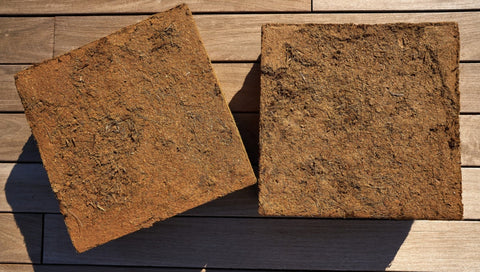
Luckily, there are many sustainable alternatives to peat moss, such as coco coir. Coco coir is made from coconut husks, a waste product that would otherwise be discarded. It is renewable, environmentally friendly, and just as effective as peat moss at improving drainage and aeration in soil, which means that plants will stay healthy longer. It has an excellent water-holding capacity and moisture-retention properties. Additionally, coco coir has a neutral pH and is relatively pest-free. Best of all, coco coir is widely available and relatively inexpensive. When it comes to sustainability, coco coir is the clear choice for gardeners.
When choosing between peat moss and coco coir, consider your needs and the sustainability of each option.
Perlite
Perlite is a lightweight, white, granular material that is made from volcanic glass. It's pretty easy to find, as it can often be found in your local nursery or gardening centre.

Perlite has many benefits as an ingredient in seed starting mixes:
- Provides aeration and drainage
- Wicks away excess moisture
- Improves water retention and helps prevent soil compaction
Vermiculite
Vermiculite is a clay mineral mined from the earth's crust, heated until it pops like popcorn and then dried.
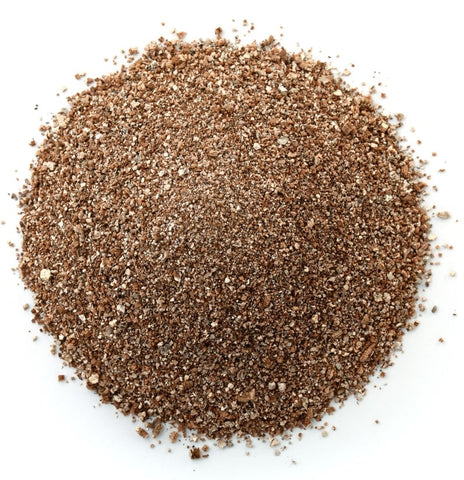
Vermiculite has a high cation exchange capacity (CEC), which means it can attract and hold nutrients, making them available when the plants need. Vermiculite also has a large surface area, making it ideal for holding moisture. It's used in seed starting mixes because it helps prevent compaction and retains water well. Vermiculite also improves aeration and drainage by allowing air to circulate around the seeds.
River Sand
Sand improves drainage and air infiltration. Soil compaction can lead to poor root development, poor plant growth, and even the death of your favourite garden plants. Builder's sand or coarse river sand is the best choice for use in a seed raising mix or garden. The particles are large enough that they won't clump together when wet but small enough that they'll provide good drainage.
Worm castings or Finely sifted compost
Adding worm castings to any homemade seed raising mix will instantly increase its nutritional value. Worm castings are an excellent source of nutrients for plants. They are natural fertilisers and can be purchased at most garden centres or online.
Worm castings contain high levels of nitrogen and phosphorus, which is why they're so great in seed starting mixes—these two elements are key ingredients in plant growth. But worm castings also contain other nutrients as well, such as potassium and calcium (which are essential for overall plant health).
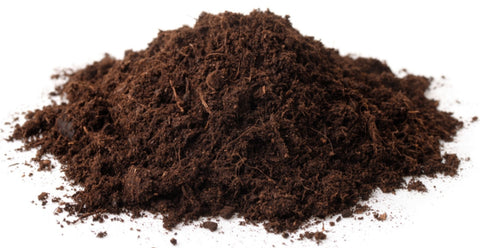
Finely sifted compost is another excellent addition to your homemade seed starting mix. Compost is an excellent soil amendment because it helps improve drainage, aeration and moisture retention. When you add compost or worm castings to your homemade seed starting mix, you're essentially giving your seeds the best possible start in life!
Seed raising mix recipe & formula
Now that you've read about the different ingredients for seed starting mixes, it's time to get down to business and make your own!
To make a batch of seed raising mix, you will need:
- 2 parts coco coir or peat moss
- 1 part vermiculite or perlite (you can use both if you can get both)
- 1 part river sand
- ½ part worm casting & ½ part finely sifted compost (if you can't find worm casting, then double up the compost amount)
Mix all ingredients together in a large bowl, and ensure that the mixture remains as fine as possible with no large clumps. You can store this mix outdoors in a closed bin until spring. Or if storing indoors, keep covered at room temperature out of direct sunlight until ready for use.
The shortcut method to DIY Seed Raising Mix
If you're short on time or just want to cut back on the work, then you can make a seed raising mix from your standard potting mix. Sieving your standard potting mix is important in preparing it for use as a seed raising mix. It removes any large organic matter or particles, and you'll be left with only the fine composted organic matter and sand particles that will form the base of your quick DIY seed raising mix. These strained, larger particles are a valuable resource for you, and can be used as mulch elsewhere in your garden or added to compost heaps!
When you're starting your own seeds, it's important to use nutrients that will help the seedlings' roots grow strong and support the foliage above ground. One way to accomplish this is by adding some worm castings or finely sifted homemade compost to the mix. These materials are rich in nutrients and help plants take in all the essential elements they need. We recommend incorporating 25% to 33% worm castings or compost into your mix, which will give your plants the nutrients they need to grow strong and healthy.
While many commercial seed starting mixes are available on the market, nothing beats making your own. It's economical, better for the environment and a great way to learn more about gardening. The information in this article should be enough to get you started with making your own seed starting mix.
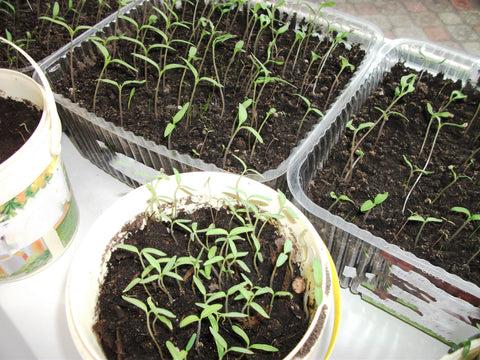

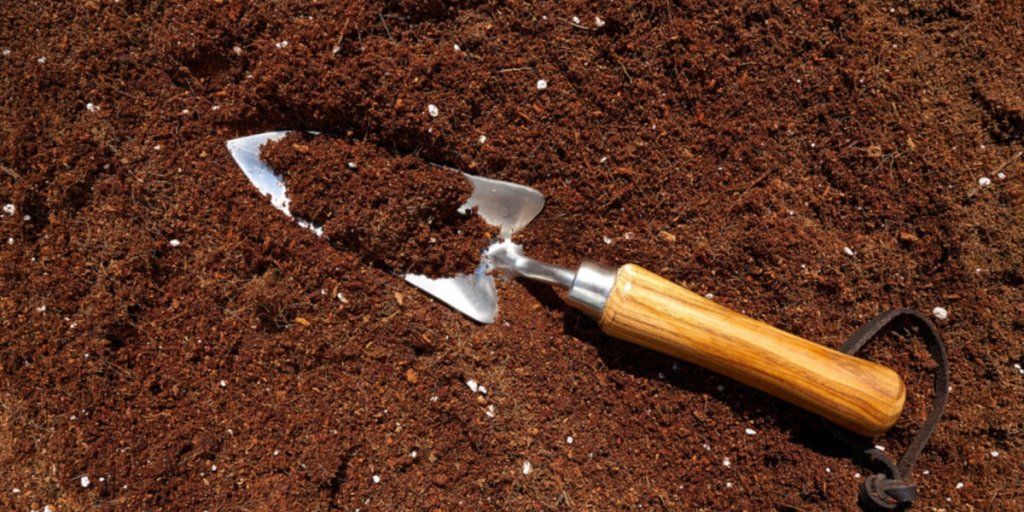
3 comments
June Shannon
Thank you for such excellent content. I’ve saved this article and can’t wait to put your formula into action.
Ilmu Forensik
Do you have a
mixture
of good seeds?Osborne Jannette
Thanks again heaps, learning alot more. 👍